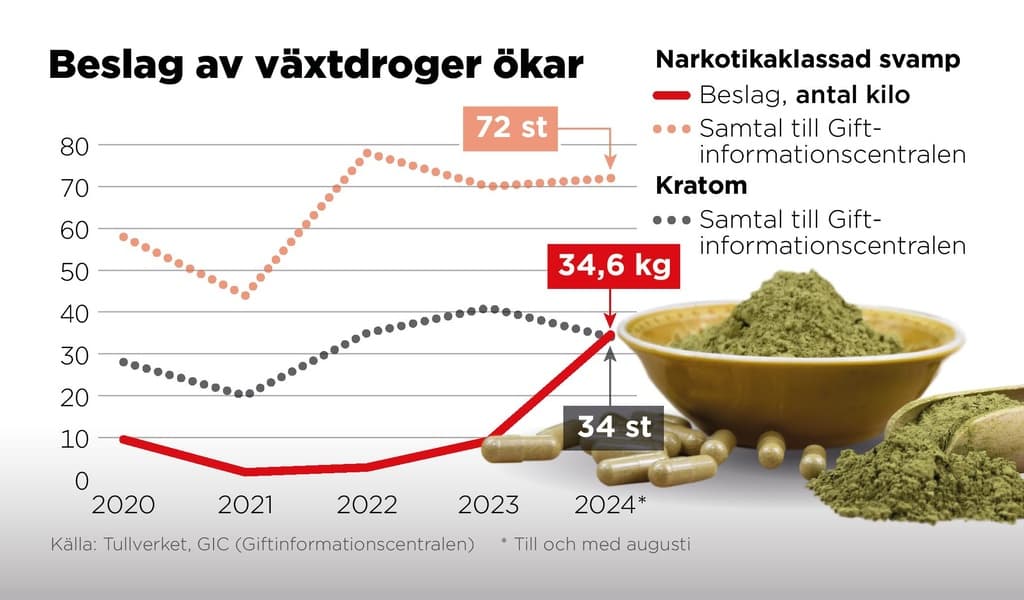On social media, among other platforms, companies are advertising plants and fungi that have similar effects to illegal drugs. In their marketing, they emphasize that it is completely legal for Swedish consumers to order and receive these products in the country, which is also true.
This applies, for example, to boxes containing fungal mycelium that can grow into fungi containing the hallucinogenic substances psilocybin or psilocin.
Okay without fungi
If no fungi have grown in the box when it crosses the Swedish border, the Customs Agency has no legal right to stop or seize the shipment.
It is permitted to bring in the cultivation kit into the country, but you are not allowed to cultivate the fungi. You can't say it's free to do as you please, but we at the Customs Agency have no tools to stop it since it cannot be classified as a narcotic at the time of import, says Jenny Åberg, expert and chemist at the Customs Agency.
However, it is illegal to bring the actual fungi into Sweden, but despite this, interest and attempts seem to have increased in recent years.
In 2023, 9.21 kilograms of narcotic-classified fungi were seized. So far this year, 34.6 kilograms have been seized, an increase of nearly 276 percent.
For soap making
When it comes to kratom, which is marketed and sold as an ingredient for soap making, over 40 tons were imported into Sweden in 2023. The reason it is sold as a soap ingredient is that the plant is not classified as a narcotic, but if you use it and, for example, make tea from the plant, then you are manufacturing narcotics.
I've seen very many websites selling kratom and even soap-making kits, but I've never seen a kratom soap. You can suspect that there might be another use that's relevant, says Jenny Åberg.
She says that the Customs Agency has informed the responsible authorities about the loophole in the legislation for many years, regarding kratom, among other things. It is the Public Health Agency and the Medical Products Agency that have the task of investigating substances for narcotic classification. But so far, the import of the product is legal.
Looked into the question
Åsa Thornqvist is the acting head of the unit at the Public Health Agency responsible for proposing to the government substances that should be classified as narcotics.
She confirms that it is not currently part of the agency's mandate to propose narcotic classification of whole plants, such as kratom.
We are looking into the question of whether we should be able to investigate and propose narcotic classification of plants as well, but we don't do that yet, says Åsa Thornqvist.
+ Kratom is a tree whose leaves contain mitragynin, the main active substance.
+ The leaves are dried and chewed, smoked, or ground into powder for tea.
+ Kratom produces stimulating and euphoric effects in low doses, while larger doses produce opioid-like effects.
+ Risk of addiction development. Epileptic seizures and development of jaundice occur. Isolated deaths.
+ Ingestion of certain fungi from the Psilocybe genus, sometimes called Magic mushrooms, produces symptoms such as euphoria, hallucinations, high pulse, agitation, and in severe cases, acute psychosis.
+ The fungi can also cause "flashbacks," i.e., recurring symptoms, up to several weeks after ingestion.
+ The fungi are eaten fresh/raw or dried.
Source: Poison Information Centre






